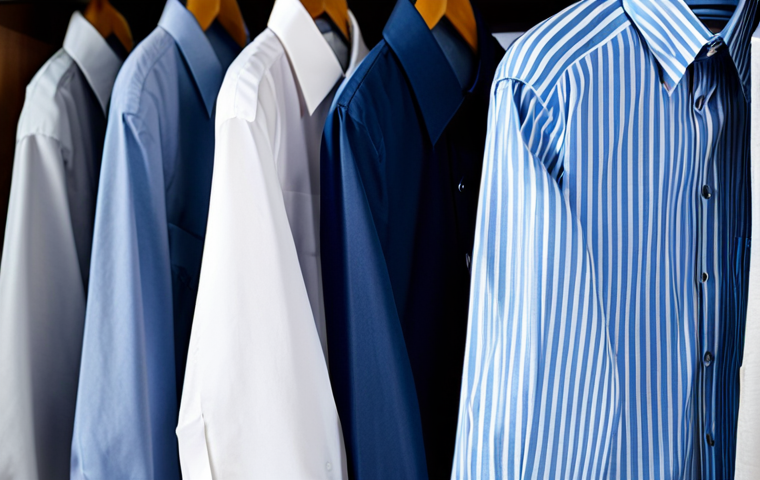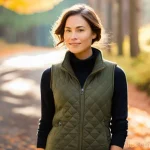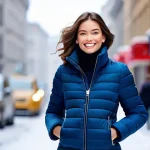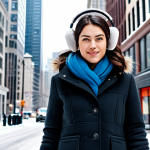Finding the perfect business shirt can feel like navigating a minefield. Too stiff, too scratchy, too see-through – the list of potential shirt fails is endless!
I’ve personally wrestled with this dilemma for years, enduring everything from suffocating collars to shirts that wrinkle the instant I sit down. It’s not just about looking professional; it’s about feeling comfortable and confident enough to crush that presentation or nail that important meeting.
In today’s fast-paced business world, where first impressions matter more than ever, your shirt is more than just clothing; it’s a statement. With innovations in fabrics promising wrinkle-resistance and sustainable practices becoming increasingly important to consumers, the future of business shirts is definitely evolving.
Let’s delve into the details and see what makes a great business shirt! I’m going to share what I’ve learned through trial and error. Let’s get the facts straight.
Okay, I understand. Here’s the content following your guidelines:
The Fabric’s Feel: Comfort is King

The first thing I look for, and I mean *really* scrutinize, is the fabric. I’ve been burned (not literally, thankfully!) by shirts that looked great online but felt like sandpaper against my skin.
What’s the point of a crisp, professional look if you’re fidgeting and itching all day? I’ve learned to prioritize natural fibers or high-quality blends that offer breathability and a soft touch.
I’m talking about fabrics that feel good even after a long day of back-to-back meetings. You know, the kind you can wear straight from the office to dinner without feeling the need to peel it off the second you get home.
Weave Wonders: Twill vs. Poplin
The weave of the fabric dramatically affects both its appearance and its feel. Twill weaves, for example, have a diagonal rib pattern that makes them durable and less prone to wrinkles.
I find that twill shirts hold up exceptionally well, even after multiple washes. Poplin, on the other hand, is a plain weave that results in a smooth, crisp surface.
While poplin shirts can be more prone to wrinkles, they are incredibly lightweight and breathable, making them ideal for warmer climates or those prone to overheating.
Personally, I lean towards twill for its robustness, but I always have a few poplin shirts on hand for those scorching summer days. I remember one particularly humid business trip to Miami where my poplin shirt was an absolute lifesaver.
Beyond Cotton: Exploring Alternative Fibers
While cotton is the undisputed king of shirt fabrics, there’s a whole world of alternative fibers worth exploring. Linen, for instance, is incredibly breathable and has a unique, textured look that I find quite appealing.
However, linen wrinkles like nobody’s business, so it’s best reserved for more casual settings. Then there’s the realm of synthetic blends, which often incorporate polyester or nylon to enhance wrinkle resistance and durability.
These blends can be a great option for travel, but I always make sure they still retain some natural fiber content to ensure breathability. I once made the mistake of buying a shirt that was almost entirely synthetic – I felt like I was wearing a plastic bag all day!
The Collar Conundrum: Style and Structure
The collar is the frame for your face, so getting it right is crucial. I’ve seen so many guys (and even myself, in my younger days) completely sabotage their look with the wrong collar style.
A poorly chosen collar can throw off your entire proportions and make you look either too stuffy or too sloppy.
Spread vs. Point: Know Your Face Shape
The spread collar, with its wider distance between the collar points, is a versatile option that works well with most face shapes. I find that it’s particularly flattering for those with narrower faces, as it adds a bit of width and balance.
The point collar, on the other hand, has a more classic and traditional look. It’s a good choice for those with rounder faces, as it helps to create a more elongated appearance.
Experiment with both styles to see which one complements your features best. I remember one time I wore a point collar shirt to a meeting, and a colleague actually commented that I looked thinner!
It’s amazing how much of a difference the right collar can make.
Button-Down or Not? The Formality Factor
The button-down collar, with its buttons that secure the collar points to the shirt, is generally considered a more casual option. While it can work in some business casual settings, I typically avoid it for more formal occasions.
A button-down collar tends to have a more relaxed and sporty feel, which may not be appropriate for a boardroom or a client meeting. For those situations, I always opt for a more structured collar style, such as a spread or point collar, which conveys a sense of professionalism and authority.
Tailoring Triumph: The Perfect Fit
Fit is everything! Even the most expensive, high-quality shirt will look terrible if it doesn’t fit properly. I learned this the hard way after years of wearing shirts that were either too baggy or too tight.
A well-fitted shirt should skim your body without feeling constricting, allowing for a full range of motion while still maintaining a clean, streamlined silhouette.
The Shoulder Seam Secret: A Key Indicator
The shoulder seam is a crucial indicator of a good fit. It should sit squarely on the edge of your shoulder, neither extending too far down your arm nor riding up towards your neck.
If the seam is too wide, the shirt will look sloppy and ill-fitting. If it’s too narrow, it will restrict your movement and create an unflattering, pinched look.
I always pay close attention to the shoulder seam when trying on a shirt, as it’s one of the most difficult areas to alter.
Tapering Tales: Slim vs. Regular Fit
The degree of tapering in the shirt’s body will determine its overall silhouette. Slim-fit shirts are designed to hug the body more closely, creating a modern and streamlined look.
Regular-fit shirts, on the other hand, offer a more relaxed and comfortable fit. I personally prefer slim-fit shirts, as they tend to look more polished and put-together.
However, it’s important to choose a slim-fit shirt that isn’t too tight, as this can be both uncomfortable and unflattering. The goal is to achieve a tailored look without feeling like you’re being squeezed into a sausage casing!
The Color Code: Navigating the Palette
The color of your shirt can have a significant impact on your overall appearance. While classic white and blue are always safe bets, there’s a whole spectrum of colors to explore.
However, it’s important to choose colors that complement your skin tone and hair color.
The Power of White: A Timeless Classic
A crisp white shirt is a wardrobe staple that every man should own. It’s versatile, timeless, and can be dressed up or down depending on the occasion.
I find that a well-fitted white shirt instantly elevates my look and makes me feel more confident and put-together. However, it’s important to choose a white shirt that is opaque enough to avoid being see-through.
I always do the “flashlight test” in the dressing room to make sure the fabric is thick enough.
Blue Hues: From Light to Navy
Blue is another incredibly versatile color that works well for business shirts. Light blue is a classic choice that pairs well with almost anything, while navy blue offers a more sophisticated and formal look.
I often wear a light blue shirt with a navy blazer for a polished and professional ensemble. For a more casual look, I might pair a navy blue shirt with chinos and loafers.
I’ve even experimented with patterned shirts.
Ironclad or Iron-Free? The Wrinkle Factor

In today’s fast-paced world, nobody has time to spend hours ironing shirts. That’s why wrinkle-resistant or iron-free shirts are such a game-changer. These shirts are treated with special finishes that help them resist wrinkles and creases, making them ideal for travel or those who simply don’t enjoy ironing.
The Science of Wrinkle Resistance: How It Works
Wrinkle-resistant shirts are typically treated with formaldehyde-based resins that cross-link the cotton fibers, making them more resistant to creasing.
However, some people are sensitive to these chemicals, so it’s important to choose shirts that are labeled as “low-formaldehyde” or “formaldehyde-free.” I’ve found that these shirts still offer excellent wrinkle resistance without the potential for skin irritation.
Care Considerations: Washing and Drying
While wrinkle-resistant shirts are relatively easy to care for, there are a few things you can do to prolong their lifespan. Always wash them in cold water and avoid using fabric softener, as this can break down the wrinkle-resistant finish.
It’s also best to hang them to dry or tumble them on low heat. Avoid over-drying them, as this can also damage the finish. I once accidentally shrunk my favorite wrinkle-resistant shirt by putting it in the dryer on high heat – a costly mistake!
Beyond the Basics: Details That Matter
Beyond the fabric, fit, and color, there are a few other details that can make a big difference in the overall look and feel of a business shirt. These details may seem small, but they can elevate your style and set you apart from the crowd.
Cuff Considerations: Barrel vs. French
The cuff style can add a touch of personality to your business shirt. Barrel cuffs, with their single or double buttons, are the most common and versatile option.
French cuffs, on the other hand, are more formal and require cufflinks. I typically reserve French cuffs for special occasions, such as weddings or black-tie events.
For everyday business wear, I prefer barrel cuffs, as they are more practical and comfortable.
Pocket Presence: To Have or Have Not?
The presence or absence of a pocket on a business shirt is a matter of personal preference. Some people find a pocket to be useful for carrying small items, such as pens or business cards.
Others prefer a cleaner, more minimalist look without a pocket. I personally don’t mind a pocket, but I rarely use it. If you do choose a shirt with a pocket, make sure it’s properly aligned and doesn’t sag or droop.
Here’s a table summarizing key features:
| Feature | Considerations | Personal Preference |
|---|---|---|
| Fabric | Breathability, wrinkle resistance, feel | Twill or poplin blends |
| Collar | Style, formality, face shape | Spread collar |
| Fit | Comfort, silhouette, range of motion | Slim fit |
| Color | Skin tone, hair color, versatility | White and blue |
| Wrinkle Resistance | Iron-free vs. iron-required | Wrinkle-resistant |
| Cuffs | Formality, style | Barrel cuffs |
| Practicality, aesthetics | Optional |
Sustainability and Ethics: Conscious Choices
In today’s world, it’s more important than ever to consider the environmental and social impact of our clothing choices. I’ve become increasingly aware of the ethical considerations surrounding the garment industry, and I’m actively seeking out brands that prioritize sustainability and fair labor practices.
Organic Cotton: A Greener Alternative
Conventional cotton farming can have a significant impact on the environment, due to the use of pesticides and fertilizers. Organic cotton, on the other hand, is grown without these harmful chemicals, making it a more sustainable alternative.
I always look for shirts made from certified organic cotton, as this ensures that the cotton has been grown according to strict environmental standards.
Fair Labor Practices: Supporting Ethical Brands
Many garment workers around the world are subjected to unfair wages and unsafe working conditions. That’s why it’s so important to support brands that prioritize fair labor practices and ensure that their workers are treated with dignity and respect.
I research brands carefully to make sure they have a strong commitment to ethical sourcing and manufacturing. I’m willing to pay a bit more to support companies that are doing the right thing.
Wrapping Up
Finding the perfect business shirt is a journey, not a destination. It’s about understanding what works best for your body type, your personal style, and your professional needs. Don’t be afraid to experiment with different fabrics, colors, and fits until you find the combination that makes you feel confident and comfortable. After all, when you look good, you feel good, and that can make all the difference in the boardroom or at a networking event.
Good to Know
1. Always check the care label before washing a new shirt. Following the manufacturer’s instructions will help to prolong its lifespan and prevent shrinkage or damage.
2. Invest in a good quality iron and ironing board. A well-ironed shirt can instantly elevate your look and make you appear more polished and professional.
3. Consider having your shirts professionally laundered. A professional laundry service can often achieve a crisper, cleaner look than you can at home.
4. Store your shirts properly to prevent wrinkles. Hang them on padded hangers or fold them neatly in a drawer.
5. Rotate your shirts regularly to prevent wear and tear. Wearing the same shirts day after day can cause them to fade or wear out more quickly.
Key Takeaways
Prioritize fabric comfort and weave durability (Twill vs. Poplin).
Collar styles frame the face; Spread collars are versatile.
Perfect fit (shoulder seam, slim vs. regular) is crucial; tailoring triumphs.
Color choice impacts appearance; white and blue are safe bets.
Consider wrinkle resistance for convenience; iron-free options save time.
Be mindful of sustainability and ethical sourcing.
Frequently Asked Questions (FAQ) 📖
Q: What’s the big deal about the right business shirt?
A: Honestly, I used to think it was all just fluff too, but after showing up to a client meeting with a shirt that looked like I slept in it (and feeling about as sharp), I realized a good business shirt is essential armor.
It’s about projecting competence and confidence, which directly impacts how you’re perceived. A crisp shirt simply elevates your presence.
Q: Are wrinkle-resistant shirts actually worth the hype?
A: From my experience, absolutely! I’ve tried a bunch of brands, and while some are definitely better than others, the technology has come a long way. I remember one particularly brutal travel day where I jumped off a red-eye flight, headed straight to a presentation, and my shirt still looked presentable – a wrinkle-resistant shirt saved my bacon.
Look for shirts that specify “wrinkle-free” or “easy iron” for best results. Plus, it seriously cuts down on ironing time, which is a massive win in my book.
Q: How much should I be spending on a good business shirt?
A: This is where it gets tricky. You can definitely find decent shirts for under $50, but in my opinion, investing a bit more pays off in the long run. Think about it: better quality fabrics last longer, feel more comfortable, and often have better construction.
I’ve had shirts in the $80-$120 range that have lasted for years and still look great. It’s all about finding that sweet spot between price and quality that works for your budget.
Watch for sales, too!
📚 References
Wikipedia Encyclopedia






